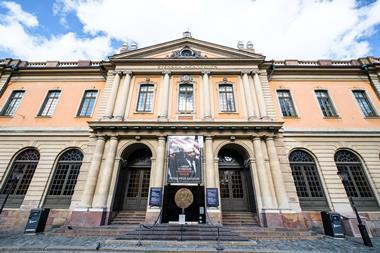Yfke Hager discovers how outreach programmes help show students that chemistry is far more than just performing titrations
Yfke Hager discovers how outreach programmes help show students that chemistry is far more than just performing titrations
’When I grow up, I want to be a chemist!’ Thus wrote an elementary school student in Orange County, US, after a team of young chemists from the University of California, Irvine (UCI), visited the student’s school earlier this year. But it all started in 1987. James Nowick and Ronald Brisbois, then graduate students at the Massachusetts Institute of Technology (MIT), set out to inspire the next generation of young scientists. ’We wanted to share the experiences that first got us excited about chemistry as schoolchildren,’ recalls Nowick, now professor in chemistry at UCI. ’So we put together a show of exciting chemistry demonstrations and went out to schools to deliver it. It was a lot of fun.’
Subsequent generations of students agreed, and the MIT Chemistry Outreach Program now reaches over 1000 high school students each year. When Nowick took up his faculty position at UCI nearly 20 years ago, he took the idea with him. This year, a dozen undergraduate and postgraduate students at UCI, led by a student coordinator, are taking chemistry to the classroom. Demonstrations range from a simple hydrogen peroxide and potassium iodide geyser to lighting up a light emitting diode with a battery of copper and magnesium electrodes planted into some limes. But the key ingredient for a successful outreach program, Nowick says, is intellectual ownership. ’Tailoring or improving existing demonstrations really allows the demonstrators to convey their passion and enthusiasm for chemistry to the students.’

Of the 10 undergraduate or postgraduate coordinators of the UCI Outreach Program over the past two decades, Nowick notes that nearly all have gone on to jobs with significant teaching duties. A talent for teaching often goes hand in hand with a knack for science communication. After 20 years as a science teacher, Peter Hoare recently took up an RSC teacher fellowship secondment at Newcastle University, UK. His local outreach activities proved so successful that the school of chemistry created a new position. As Newcastle University’s newly appointed chemistry outreach officer, Hoare aims to promote public appreciation of chemistry and encourage students to consider chemistry as a career. ’If, as a spin off, we happen to get more applications from students wanting to study chemistry at Newcastle then that’s a great bonus, but it’s not the main rationale for our outreach activities,’ he explains. With vice-chancellor Chris Brink at the helm, Newcastle University strives to be a civic university for the wider community, with teaching, research and civic engagement all given equal weight.
Shiny new lab
While Hoare was able to run experiments for local schoolchildren, scouts and members of the general public in the university’s new ?3 million teaching laboratory, he could not use the lab during university term time. Following a major fund raising campaign earlier this year, a ?250 000 refurbishment transformed a derelict school of chemistry laboratory into a shiny new outreach laboratory, equipped to university standard complete with adjacent classroom offering ICT facilities. Two other UK universities, Sheffield and Liverpool, also have outreach laboratories. ’But we are the only chemistry department in the country with a dedicated outreach lab and a dedicated full-time outreach officer,’ says Hoare.
Measuring impact
From September 2013, the Higher Education Funding Council for England will assess research partly on its ’demonstrable benefits to the economy, society, public policy, culture or quality of life’, following the example set by the National Science Foundation in the US, which requires all research proposals to demonstrate the proposed project’s ’broader impacts’. It hasn’t gone down well with the scientific community, as many scientists feel that scientific credit for outreach activities can be difficult to assess. In addition, the whirlwind of grant writing, data collection, publication writing, teaching and administrative duties results in a delicate balancing act that leaves little time for public engagement.
Hoare’s role as a facilitator, helping researchers disseminate their research to a wider audience, will help future research proposals meet these requirements. ’What I want to do next is tailor the experiments we offer in the outreach laboratory to the research interests of chemists at Newcastle, so we can demonstrate the relevance of research to the real world,’ says Hoare. As examples, he points to the development of anticancer drugs and radioactive tracers to detect cancer. ’We want to show students that chemistry is much more than just performing titrations; it can lead to a career developing cutting edge science that can make a real difference to our planet and society.’
Yfke Hager is a freelance writer based in Manchester, UK
Further Reading
For more information about the Chemistry Outreach Program at the University of California, Irvine, contact James Nowick: jsnowick@uci.edu
For more information about the Chemistry Outreach Laboratory and outreach activities at Newcastle University, contact Peter Hoare: peter.hoare@newcastle.ac.uk












No comments yet